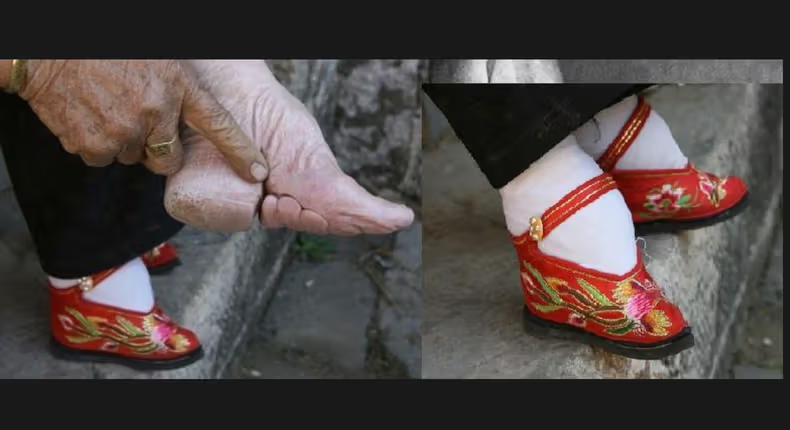< 1 mn read
Beauty standards are not static; they change dramatically with each century and decade. What is deemed beautiful in one era may shock those from another.
FIVE PAINFUL BEAUTY STANDARDS FROM HISTORY
- HIGH FOREHEADS IN MEDIEVAL EUROPE
In Medieval Europe, a high forehead was considered a hallmark of beauty, nobility, and intelligence. Women would pluck their hairlines to achieve this look, even going as far as removing their eyelashes. The pursuit of a broad forehead often led to painful grooming practices. - SMALL FEET IN IMPERIAL CHINA
The practice of foot binding began in ancient China during the Song Dynasty, where small “lotus feet” were a sign of beauty. Young girls’ feet were tightly bound to prevent growth, resulting in severe pain and crippling conditions, all in the name of beauty. - HAIR PLUCKING IN ANCIENT EGYPT
Approximately 4,000 years ago, Egyptian women plucked individual hairs from their bodies using seashells. Hairlessness was associated with cleanliness, youth, and social status, making the painful removal of body hair a common beauty practice. - CURVY BODIES IN RENAISSANCE EUROPE
Unlike today’s preference for slimness, the Renaissance ideal celebrated curvy, full-figured bodies. Women often wore tight corsets that restricted breathing and disfigured their bodies to achieve this look, as curves were seen as a sign of wealth and fertility. - LEAD POISONING FOR PALE SKIN IN 18TH-CENTURY EUROPE
Many women in 18th-century Europe desired pale skin to cover imperfections, leading them to use white lead makeup—an actual poison. The desire for a flawless, pale complexion often came at a great cost to their health.

